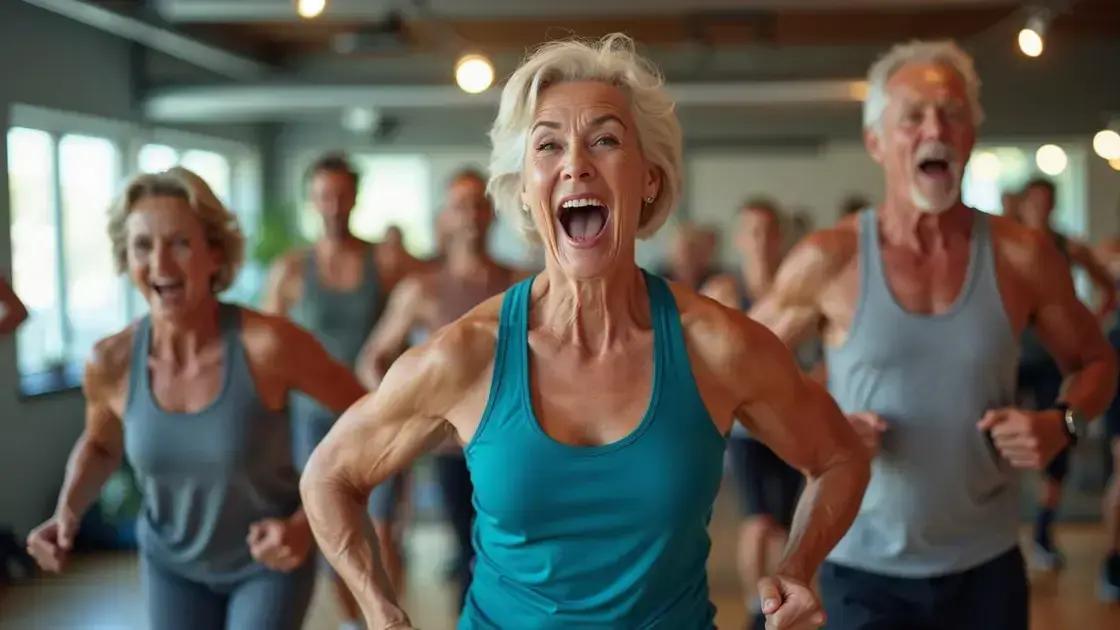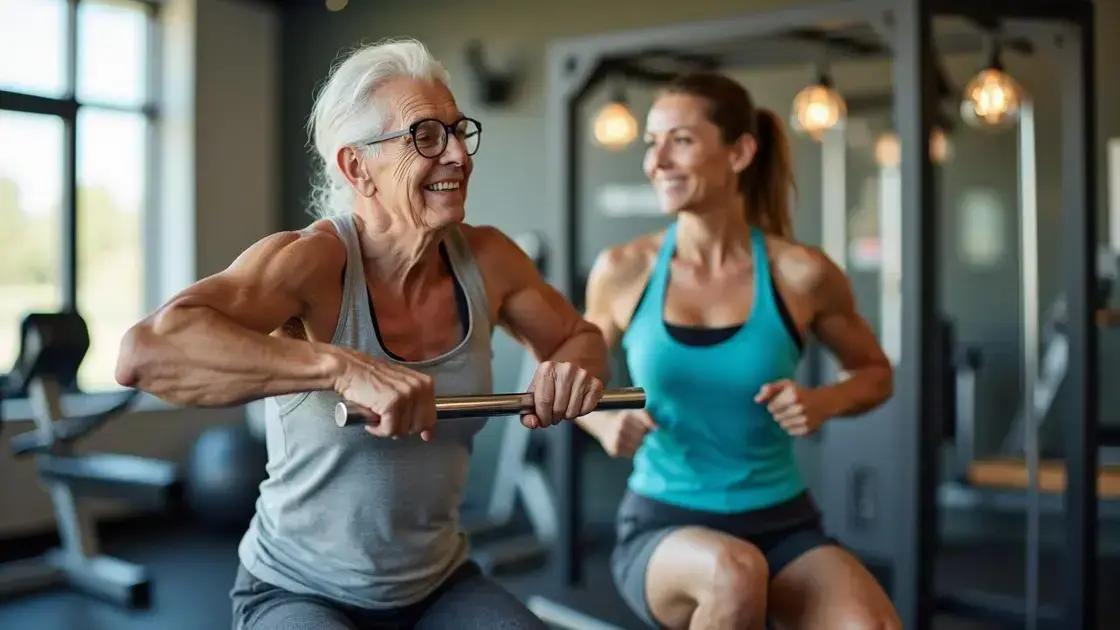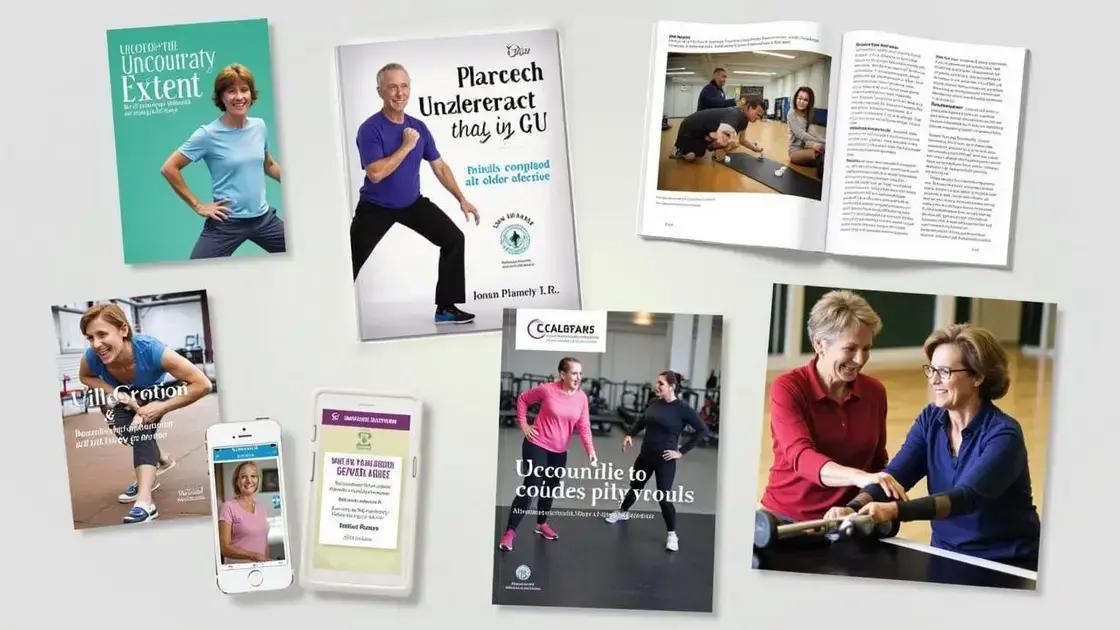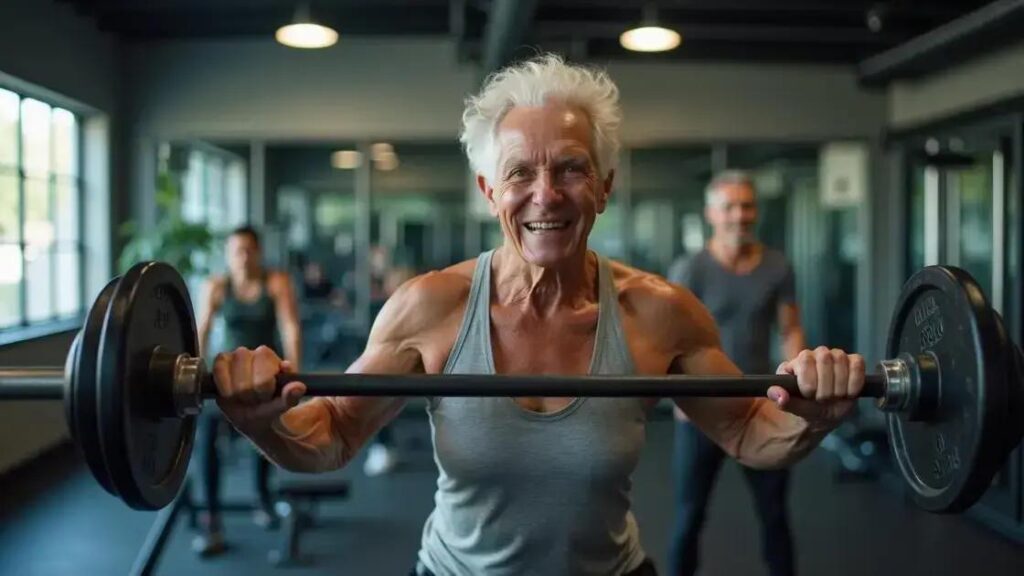High-intensity exercise can be safely incorporated after 50 by starting slowly, consulting a healthcare professional, and listening to your body. Benefits include improved cardiovascular health, increased muscle strength, and enhanced mental well-being. Resources like personal trainers, fitness apps, and online courses provide additional support for a successful transition into these workouts.
Incorporating high-intensity exercise after 50 can transform your health and well-being. Many individuals may find the idea daunting, yet engaging in impactful workouts can improve cardiovascular health, strength, and overall vitality. This article will guide you on how to safely incorporate high-intensity exercise into your routine, highlighting essential tips, benefits, and resources tailored for those over 50.
Understanding High-Intensity Exercise

Understanding High-Intensity Exercise is crucial for anyone considering this approach, especially for those over 50. High-intensity exercise, or HIIT (High-Intensity Interval Training), involves short bursts of vigorous activity followed by rest or low-intensity periods. This type of training emphasizes quality over quantity, allowing individuals to achieve significant health benefits in less time.
What is High-Intensity Exercise?
High-intensity exercise typically includes activities that markedly increase your heart rate. Examples are sprinting, cycling at high speeds, or circuit training workouts. These exercises should be performed at 70% to 90% of your maximum heart rate. Incorporating this intensity challenges your cardiovascular system and builds muscle strength.
Importance of Understanding HIIT
Before diving into high-intensity workouts, comprehending the fundamentals is essential. This knowledge helps in setting realistic goals and recognizing your body’s limits. Understanding HIIT’s structure allows for safe participation, particularly for older adults. Always listen to your body and consult with a healthcare professional if unsure.
Types of High-Intensity Exercises
Numerous forms of high-intensity workouts exist, including:
- Interval Running
- Tabata training
- Circuit training
- Bodyweight exercises (e.g., push-ups, burpees)
Each of these methods can be tailored to fit your fitness level. It’s important to select exercises that you enjoy to help maintain motivation and consistency.
Safety Considerations
Engaging in HIIT requires proper training techniques and awareness of your physical health. Ensure you warm up before starting, stay hydrated, and cool down afterward. Staying mindful of pre-existing health conditions is vital. Checking with a fitness expert or coach can provide necessary adjustments to your routine, enhancing safety.
Benefits for Those Over 50

Benefits for Those Over 50 from engaging in high-intensity exercise are numerous and impactful. Many people believe that high-intensity workouts are only for the young. However, evidence shows that individuals over 50 can also reap significant health rewards from these exercises.
Improved Cardiovascular Health
One of the main benefits of high-intensity exercise is enhanced cardiovascular health. By pushing your heart rate up during these workouts, you strengthen your heart, improve blood circulation, and lower the risk of heart disease.
Increased Muscle Strength
As we age, muscle mass and strength tend to decline. High-intensity training helps combat this issue. It promotes muscle growth by stimulating the muscle fibers, which improves your overall strength and makes daily activities easier.
Enhanced Metabolism
Engaging in high-intensity workouts can boost your metabolism, which often slows with age. A higher metabolism means you burn more calories even at rest. This can help with weight management and improve overall energy levels.
Improved Mental Health
Exercise, particularly high-intensity workouts, can have a positive effect on mental health. Such exercises release endorphins, which elevate moods and reduce feelings of anxiety and depression. This can be a great benefit for older adults seeking to enhance their emotional well-being.
Better Balance and Coordination
High-intensity workouts often include dynamic movements, which improve balance and coordination. This is vital for older adults, as better balance can reduce the risk of falls, a common hazard among seniors.
Social Benefits
Participating in group high-intensity classes can foster a sense of community. For those over 50, these social interactions can enhance motivation and accountability, making it easier to stick to a fitness routine.
Tips for Safe Integration

Tips for Safe Integration of high-intensity exercise into your routine are essential for individuals over 50. It’s crucial to approach this type of exercise with caution and awareness. Here are several tips to help ensure safety while reaping the benefits of high-intensity workouts.
Consult a Healthcare Professional
Before starting any high-intensity program, consult with your doctor. They can assess your health status and guide you on which exercises are safe for your condition.
Start Slowly
When integrating high-intensity training, start slow. Begin with lower intensity workouts, gradually increasing the challenge as your body adapts. This will help minimize the risk of injury.
Incorporate Rest Periods
Include ample rest periods in your workout. After each high-intensity interval, take time to recover. This allows your heart rate to return to a safer level and prevents burnout.
Listen to Your Body
Pay attention to how your body feels during workouts. If you experience pain, dizziness, or shortness of breath, stop immediately. Modify the exercises as needed and be mindful of your limits.
Make Use of Professional Guidance
Working with a certified personal trainer can be beneficial. They can create a tailored program specifically for your needs and help ensure you are performing exercises correctly.
Stay Hydrated
Hydration is key during high-intensity workouts. Drink plenty of water before, during, and after exercising to maintain optimal hydration levels and enhance performance.
Warm-Up and Cool Down
Never skip your warm-up and cool-down. Warming up prepares your body for the workout ahead, while cooling down aids in recovery. Incorporate dynamic stretches before and static stretches after your workout.
Resources for Further Guidance

Resources for Further Guidance on safely incorporating high-intensity exercise after 50 are essential for those looking to enhance their fitness journey. Below are several valuable resources that provide additional information, support, and training programs.
Books
Consider reading books specifically designed for older adults and high-intensity training. Titles like “The New Rules of Lifting for Life” and “Strong Women Stay Young” offer insights into effective exercise routines and nutrition tailored for this age group.
Online Courses
Websites such as Udemy and Coursera offer online courses focused on fitness and health for seniors. These courses can guide you on safe workout practices, nutrition advice, and more.
Fitness Apps
Many fitness apps cater to older adults, providing tailored workout programs that include high-intensity routines. Look for apps like Fitbit Coach or Aaptiv, which offer guided sessions and modifications to fit your level.
Support Groups
Joining local or online support groups can be beneficial. Many communities have fitness groups aimed at older adults. Sharing experiences and tips can boost motivation and provide encouragement.
Professional Trainers
Consider hiring a personal trainer with experience working with older adults. They can create a personalized workout plan, ensuring you use proper techniques and stay safe as you integrate high-intensity exercise into your routine.
Health Websites
Reliable health websites like the Mayo Clinic or the CDC provide articles and guidelines on exercise health for older adults. Utilize these resources to stay informed on best practices.
Embracing High-Intensity Exercise After 50
Incorporating high-intensity exercise into your routine after 50 can be highly beneficial, leading to improved health, increased strength, and enhanced quality of life. By understanding the fundamentals of high-intensity training and recognizing its advantages, individuals can make informed decisions about their fitness journey.
Safety should always be a priority; consulting with health professionals, starting slowly, and listening to your body are key factors for success. Utilizing available resources, such as books, online courses, and professional trainers, can provide valuable guidance and support.
With the right approach, high-intensity exercise can become an effective part of your lifestyle, allowing you to enjoy an active and fulfilling life well into your later years.
FAQ – Frequently Asked Questions About High-Intensity Exercise After 50
What are the benefits of high-intensity exercise for those over 50?
High-intensity exercise can improve cardiovascular health, increase muscle strength, enhance metabolism, boost mental health, and improve balance and coordination.
How do I safely start high-intensity workouts after 50?
Start slowly by consulting a healthcare professional, incorporating rest periods, listening to your body, and gradually increasing workout intensity.
What types of high-intensity exercises are suitable for older adults?
Suitable exercises include circuit training, interval running, and bodyweight exercises. Choose activities that fit your fitness level.
Why is it important to consult a doctor before starting high-intensity exercise?
Consulting a doctor ensures that you understand your health status and receive personalized advice tailored to your medical history and fitness goals.
What resources are available for further guidance on high-intensity exercise?
Books, online courses, fitness apps, professional trainers, and health websites provide valuable information and support for safe high-intensity training.
Can I do high-intensity workouts alone or should I seek assistance?
While you can workout alone, seeking assistance from a personal trainer or joining group classes can enhance safety and provide motivation.












